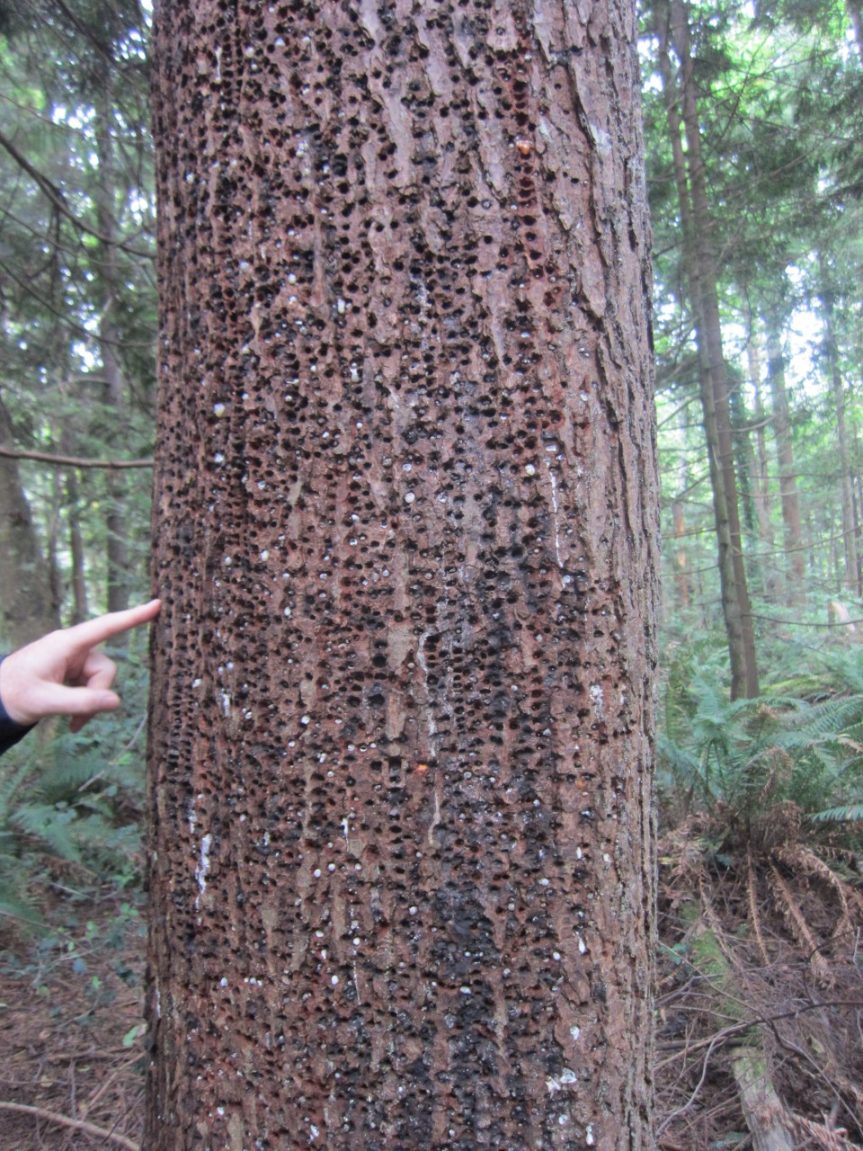A Walk in the woods with Frank Ritcey and Hugh Marshall
by Barbara Sherriff, 16 September 2016.
Sixteen members of the Malaspina Naturalists joined Frank Ritcey (Wildsafe BC coordinator) and Hugh Marshall (forester) for an interesting and educational walk along the Millennium Trails at the rear of the Recreation Complex.
Things we learnt included:
- Bear bells attract bears rather than repel them (a.k.a. dinner bells)
- Whistles can sound like distressed small animals and attract bears
- Bear spray deters bears, cougars and wolves even if you don’t hit the animal. Do not walk in the woods without a can
- Bears dig up rotting stumps or mud wasp nests to look for larvae leaving holes in the ground
- Bears drag garbage bags into a “staging area” in the woods to enjoy it in peace
- Conifer species vary in their light requirements, which influence the structure of the forest. Hemlock and cedar, for example, tolerate shade and commonly come in under the more light-demanding Douglas fir and broadleaved species.
- If a bear is huffing and puffing, it is being defensive
- If a bear is coming towards you quietly (stalking like a cat), it could be considering eating you
- Cougars only attack weak prey so always fight back if attacked
- spit bugs should be called fart bugs as the air inside the bubbles does not come from their mouths
- Slugs have just one asymmetric breathing hole on the right side of their head
- Trees can control the local water table aggressively pulling up water from a wide area.
- Cutting down trees will change the water table considerably
- Sapsuckers feed on both the sap and the bugs that come to feed on the sap oozing out of holes that they have drilled in a tree












